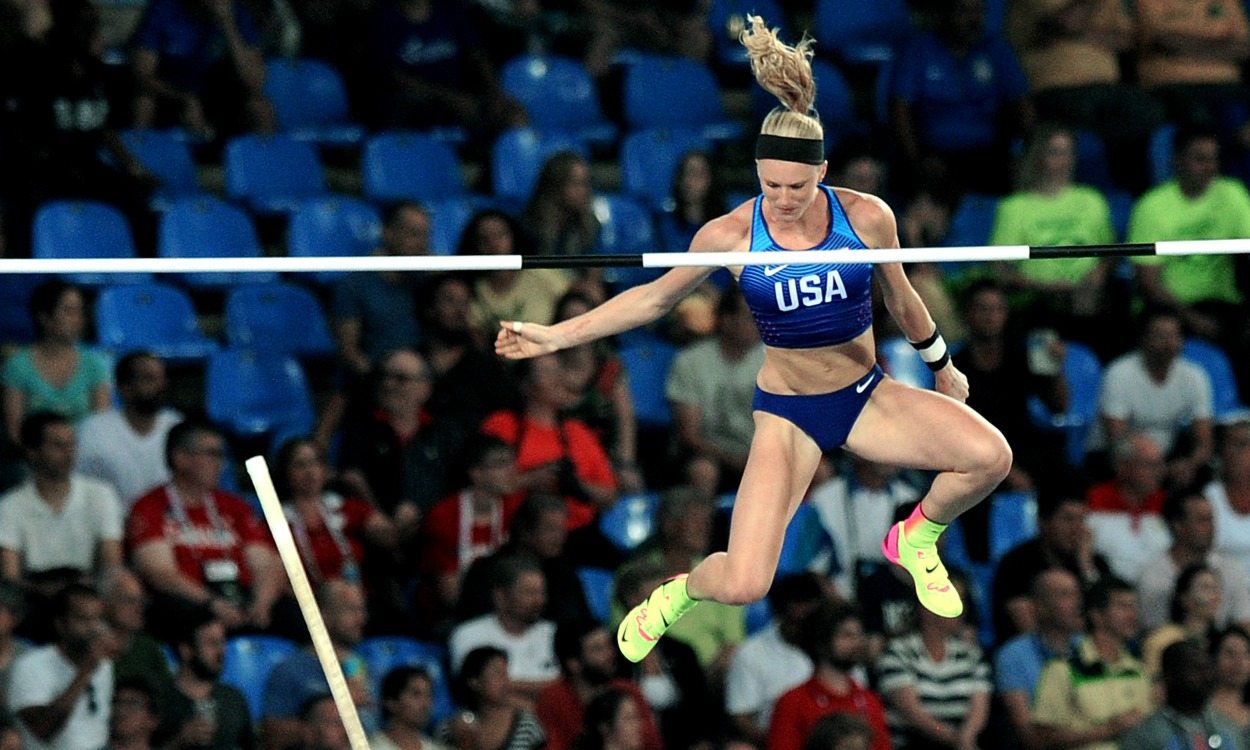Stuart Weir profiles the world and Olympic pole vault silver medallist
Sandi Morris has secured silver in her last three major championships – the 2016 World Indoors, 2016 Olympics and 2017 World Championships. Next she competes at the IAAF World Indoor Championships in Birmingham.
The American, whose parents were both athletes, started track and field at the age of around six or seven. She tried several disciplines before settling on the 100m hurdles.
“The pole vault coach saw me running hurdles and thought I would make a good pole-vaulter because I was tall, lanky and fast,” Morris explains. “He went up to my dad and said, ‘Your daughter looks as if she would be a good pole vaulter’.”
The rest, as they say, is history.
When she comes to Birmingham this week she will have eight to 10 poles in her bag. “You always pack big poles for World Championships,” she says, “because you have lots of adrenalin and it would be really unfortunate to be in a situation where you need a bigger pole and not have it. I usually have eight poles but had 10 with me last summer for the World Championships.”
As well as being able to vault successfully, a pole vaulter needs to manage the competition – not come in too early and not too late.
“The general rule of thumb for me,” she explains, “has been to enter the competition about 30 centimetres under my PB.
“At this point, with my PB at 5.00m, that is still pretty high so I like to enter the competition at 4.40m or 4.50m. If I am feeling really good I may pass a bar. It really depends on an athlete’s confidence because that really is the key to making bars at the first attempt, trusting that you are doing the right thing.
“Having the right coaching, what pole to start with and so on, are also factors. You also go off your warm-up. If I have a bad warm-up, I might come in a bit lower and jump more bars to get myself into a rhythm. That is my tactic.
“Some athletes are better at the beginning and the more jumps they take, the worse they get. But I like to jump a lot of heights. The more jumps I take, the better my technique seems to get.”
“I like to jump a lot of heights. The more jumps I take, the better my technique seems to get”
That begs the question: how many vaults is an athlete capable of in a competition? Surely there must be a limit to the number of jumps one is physically able to take?
“I think it all comes down to age and how you train,” says the 25-year-old. “I am still very young. In practice I will take 20 full-approach jumps – that is a lot of jumps. I am pretty proud that I once got PBs on a 15th and 16th jump of my competition. For some reason I was making everything on the third attempt but I just kept on fighting and suddenly I hit two PBs in a row.”
The Bryan Compton-coached athlete explains too how her training prepares her for the most demanding competition. “I suppose how many jumps you can take depends on how physically fit you are. My coach gets us very fit. We train really, really hard.
“I would say we train hardest of all the pole vaulters in the world. The training is very intense, which is great when you are younger but I will have to alter everything as I get older to be able to keep my body healthy as all the years of pole vaulting will put a tax on my body.
“Coach tries to incorporate a pole into as much as possible,” she continues. “So we will do full-blown running workouts carrying a pole – not round the track but running straight – and it makes it so much more difficult doing the running with the pole. So for me, doing 10 x 100m without a pole it is not a big deal but if you put a pole in your hands you cannot pump your arms and that makes it that much harder to run the 100m. By the end of those 10 x 100m we are barely able to run and are keeling over and falling on the track.”
It’s important to Morris to have other interests outside of athletics and one of her main passions is animals, and in particular, reptiles.
“I am very passionate about animals, I always have been,” she says. “People find my love of snakes odd and shocking but to me loving animals is just natural. I have always loved reptiles, I think they are cool and fascinating.
“I grew up watching Animal Planet. Steve Irwin, the crocodile hunter, always will be my idol. My love of animals developed as a child and carried over into adulthood. I love to go home and I have my reptiles, my dog and my bird which provide an escape from the life of an athlete.
“At the moment I just have three snakes,” she adds. “At one time in my life I had 28. My lifestyle as a travelling athlete makes it very hard to have 28 and I had to cut it down to three. I have two red tail boas and a ball python. Those are very common, harmless snakes. They are just pets. The ball python I have had since I was 11 years old. The others I have had for three and five years so they are the ones I am emotionally attached to.”














